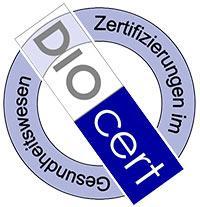About the disease
Ear cholesteatoma is a benign cyst that develops behind the eardrum in the middle ear. The most common cause of this growth is repeated infections. Other causes include problems with the Eustachian tube, which connects the back of the nose with the middle ear. It is also responsible for controlling ear pressure, which adjusts when we are flying on a plane or when we are at a high altitude, such as the top of a mountain. Sinus infections or colds can affect the Eustachian tube and stop it from working properly. Certain allergies can affect the Eustachian tube as well, but these instances are quite rare. In some cases, ear cholesteatoma can be a congenital birth defect, although such cases are extremely rare.
According to Healthline, ear cholesteatoma rarely clears up on its own. If not treated, it will continue to grow. The bones in the middle ear are very delicate, so a large cyst is likely to damage the person’s hearing. In some cases, facial muscles can also be affected.
If a cyst gets very big, fluid can start to drain from it. As the cyst grows, it can also create pressure in the ear, causing discomfort or aching pain. This condition needs to be treated as early as possible to avoid complications.
Symptoms
- Pressure in the ear
- Discomfort
- Pain in the ear
- Vertigo
- Paralysis of certain facial muscles
Diagnosis
- During a general examination, the otolaryngologist will examine the ear with an otoscope. This device is helpful in determining whether there is a cyst or anything abnormal inside the ear.
- A CT scan creates images that allow doctors to see if there are any abnormalities present in the patient’s middle ear.
Treatment
- Conservative treatment, such as repeated cleaning (debridement) over a fixed period of time, may be sufficient for patients with smaller ear cholesteatoma cysts or who have an elevated risk of complications with anesthesia.
- Surgery however, is the most effective option. Before undergoing surgery, the patient is likely to be prescribed a course of antibiotics to reduce inflammation and may also have a course of debridement and ear fluid drainage.
- Once the ear cholesteatoma cyst has been surgically removed, a follow up operation may be required to reconstruct the inner ear.
- Follow-up conservative treatment is required after surgery, to avoid recurrence in the future.
Authors:
This article was edited by medical experts, board-certified doctors Dr. Nadezhda Ivanisova, and Dr. Bohdan Mykhalniuk. For the treatment of the conditions referred to in the article, you must consult a doctor; the information in the article is not intended for self-medication!
Our editorial policy, which details our commitment to accuracy and transparency, is available here. Click this link to review our policies.




















